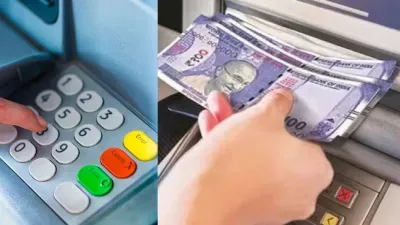The effect of RBI’s decision has now started showing in the market. 100-200 rupee notes have started coming out from a cassette of 73 percent of the ATMs in the country.
The Reserve Bank of India, after listening to the problems of the common people, had given a guideline of 30 September 2025 to increase the number of 100 and 200 rupee notes from ATMs, in which it was said that before this, 100 and 200 rupee notes should come out from 75 percent of the ATMs in the country. The effect of this decision of RBI is visible.
This represents an increase from 65 per cent in December 2024, according to CMS Info Systems, India’s largest cash management company, which operates 73,000 of the 215,000 ATMs in the country.
As per the Economic Times report, Anush Raghavan, President – Cash Management, CMS Info Systems, said that with 60 per cent of consumer spending still being based on cash, the availability of Rs 100 and Rs 200 notes, especially in villages and towns, is directly meeting the day-to-day transactional needs.
RBI sets targets for ATM cash dispensation
In a circular issued in late April 2025, RBI ordered all banks to have at least 75% of ATMs dispensing at least one cassette of Rs 100 or Rs 200 notes by September 30, 2025. The target of this direction is to increase public access to small denomination notes, which are used in daily transactions. This requirement will become more strict by March 31, 2026, when 90% of ATMs will have to follow this standard.
RBI increased ATM interchange fee
RBI has increased ATM interchange fees, making cash withdrawals more costly from May 1, 2025. This change will especially hit users who cross the limit of free transactions each month. Interchange fees are charges that one bank pays to another bank for processing ATM transactions, and these charges are passed on to the user. For example, if an HDFC Bank user withdraws cash from an SBI ATM after three free monthly transactions, HDFC may charge a fee for the extra withdrawal.















